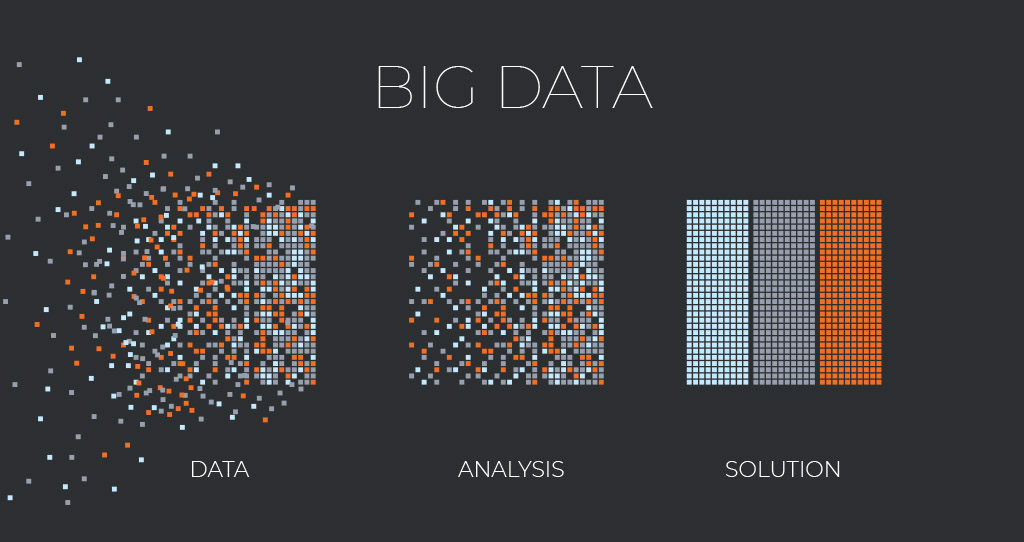Within today’s rapidly changing digital era, companies are constantly exploring ways to adapt and be present, whilst also striving for success, operating in an increasingly interconnected world. Digitization has proven to be a powerful tool for streamlining operations, improving the customer experience, and driving growth. As a technology-driven software company, STRG understands the value of digitization for business growth and places equal importance on its potential to digitally revolutionize businesses. In this article, we aim to provide a comprehensive overview of the steps of digitization for businesses, focusing on the executive level and the transformative power it holds.
Step 1: Developing A Clear Vision & Assessing The Status Quo
Digitization is the process of transforming analog data or processes into a digital format that enables companies to leverage technology and data-driven insights to optimize operations, increase efficiency and deliver greater value to customers. This includes integrating digital technologies into various business functions and processes.
Before embarking on the journey of digitization, it is recommended to identify and assess the current state and define a clear vision. This includes analyzing all of the company’s existing systems, infrastructure, and general capabilities. It is critical to align the digitization strategy with the overall business objectives and identify the areas where digital transformation can have the greatest impact. Look for opportunities where digitization could streamline operations, reduce costs or increase productivity. This assessment helps understand digital gaps and lays the groundwork for future improvements. Involve key stakeholders from different departments and levels of the organization to get a holistic perspective. Conduct interviews, surveys, and workshops to understand their issues and challenges.
Step 2: Building a Digitization Team & Culture
Forming a dedicated digitization team is essential to drive the transformation process. This team should comprise individuals with diverse skill sets, including technology experts, data analysts, project managers, and domain specialists. Collaborative efforts from different departments and stakeholders ensure a holistic approach to digitization. Digitization brings about significant changes within an organization, thus, it’s essential to have a well-defined change management strategy to address potential resistance and ensure a smooth transition. Effective communication, training, and continuous feedback mechanisms help employees embrace change and adapt to the new digital environment.
Step 3: Focus on Data-driven Decision Making
Data lies at the core of digitization. Establishing robust data collection mechanisms and implementing analytics capabilities to derive actionable insights is crucial. By harnessing data, businesses can make informed decisions, identify trends, optimize operations, and enhance customer experiences. Data privacy and security should also be prioritized throughout the digitization process.
How can we address this in practical terms? To stay within the realms of expertise & our client type, we can show two interesting examples of how data-driven decision looks like in real business day-to-day operations.
1. Publishing & Content-Rich Companies
Publishing and content-rich companies can leverage data-driven decision-making to enhance their content strategies, personalize user experiences, and optimize their publishing processes.
- Content Performance Analysis. By collecting and analyzing data on content performance, such as page views, engagement metrics, and user feedback, publishing companies can gain valuable insights into audience preferences and behavior. They can identify the most popular content topics, formats, and distribution channels. This data-driven analysis helps in shaping future content creation, optimizing content promotion strategies, and maximizing audience reach. For instance, a publishing company may discover through data analysis that video content generates higher engagement compared to written articles for a particular target audience segment. This insight can guide the company to produce more video content and allocate resources accordingly.
- Personalization and Recommendation Engines. Data-driven decision-making enables publishing companies to deliver personalized content recommendations to users. By tracking user behavior, interests, and preferences, companies can build recommendation engines that suggest relevant content tailored to each user. These recommendations can be based on factors like browsing history, reading patterns, user demographics, and social media interactions. For example, a news website can utilize data analytics to understand a user’s interests based on their previous reading habits and recommend relevant articles or related topics of interest. This personalized approach enhances user engagement, increases time spent on the website, and improves user satisfaction.
2. Logistic Companies & Automation
Logistics companies can harness data-driven decision-making to optimize their operations, streamline supply chains, and improve efficiency through automation.
- Route Optimization: By analyzing historical transportation data, logistics companies can identify patterns and optimize delivery routes. Factors such as distance, traffic conditions, fuel consumption, and customer preferences can be considered to develop algorithms that suggest the most efficient routes. Real-time data on traffic, weather, and road conditions can further enhance route planning and dynamic adjustments. For instance, a logistics company can leverage data from GPS tracking devices on their vehicles, historical delivery data, and real-time traffic updates to optimize routes, minimize fuel costs, reduce delivery time, and improve overall customer satisfaction.
- Warehouse Management and Inventory Optimization. Data-driven decision-making can improve warehouse operations by optimizing inventory management and ensuring efficient use of space. By analyzing inventory data, demand patterns, and order history, logistics companies can accurately forecast demand, determine optimal stock levels, and automate replenishment processes. This helps reduce inventory holding costs, minimize stockouts, and improve order fulfillment rates. For example, a logistics company can implement an inventory management system that integrates with real-time sales data, demand forecasts, and supplier information. By leveraging data analytics, the company can automate inventory replenishment, identify slow-moving items, and optimize warehouse space allocation based on item popularity and turnover rates.
These examples demonstrate how publishing and logistics companies can leverage data-driven decision-making to drive growth, optimize operations, and enhance customer experiences in their respective domains. By effectively utilizing data, businesses can stay ahead of the competition and make informed decisions that lead to tangible business outcomes. Check out our work for Die Furche, where we used AI to bring the entire print archive up online.
Where do we go from here?
Let’s talk about your needs! Digitization presents immense opportunities for businesses to evolve, innovate, and thrive in the digital age. By following these essential steps and partnering with STRG, your organization can embark on a successful digitization journey. As experts in the field, we have the knowledge and experience to guide you through the process, ensuring you make informed decisions that drive tangible business outcomes. Contact us today to unlock the full potential of digitization and leverage groundbreaking technological possibilities for your business’s success.
-
Get in touch with STRG's Head of Business Development Friedrich, via email friedrich.dungl@strg.at
or a quick call: +43 1 526 56 29







